Forget that COVID-19 has us housebound. Instead, let’s take off for a garden tour – in the safety and comfort of our favourite seats. Where better to begin our jailbreak than the gardens of Alcatraz! I’ve wanted an excuse to show you them since way back in 2013 after the San Francisco Garden Bloggers Fling.
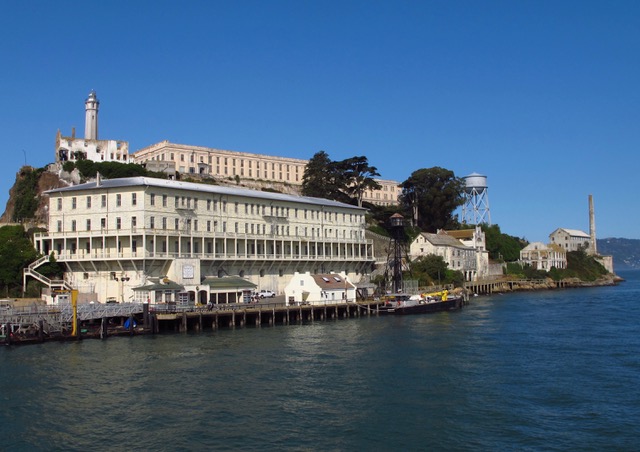
To me, the name “Alcatraz” went with movies like “The Bird Man of…” or “Escape from…” and gangsters like Scarface Capone or Machine Gun Kelly. “Must-visit garden” was the last thing I expected. But, since 2003, that’s what it has become – an award-winning, historic garden under the wing of The Garden Conservancy and Golden Gate National Parks. The gardens are one reason that (under normal conditions) tickets to tour needed to be booked as much as 90 days in advance! We managed to snag some and tacked our visit on to the end of our trip.
Alcatraz was a barren hunk of rock in the middle of San Francisco Bay when it was chosen as a military fort in the mid-1800s. Not long after, its isolation made it ideal for a military prison and, in 1933, a federal penitentiary.
Think about this. The military and federal prison guards didn’t commute. They lived there, full time – along with their families. Children were born, played, went to school, and grew u
p on Alcatraz. That blew my mind. And where there are homes, there are gardens, the first planted around 1865.
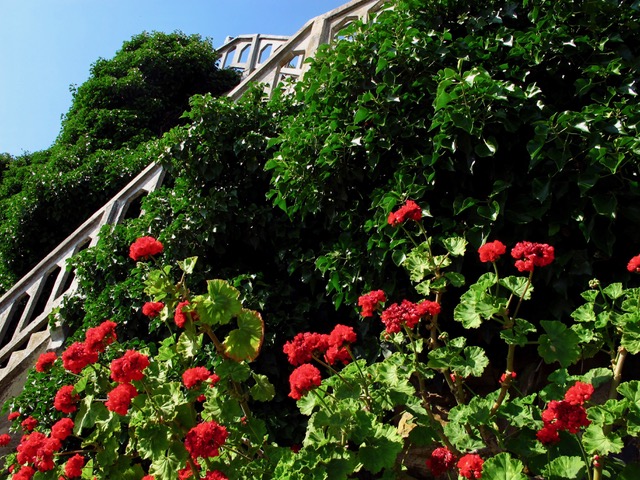
More mind-blowing? In this maximum-security prison, the inmates gardened, too. In fact, they had the chance to learn horticulture, right down to aspects like hybridization. They worked in the gardens, beautifying the view from San Francisco. They tended the warden’s garden. And they had cottage gardens of their own, even growing cut flowers. For many, gardening was a creative outlet as well as a physical one. Apple and fig trees planted in the inmates’ gardens – the latter planted in the 1940s – are still growing today.
The prison was closed in the early sixties and languished, mostly abandoned, for decades. Birds soon claimed it as a nesting site. For a couple of years around 1970, it was home to a Native American occupation and the birth of Red Power. But I won’t bother with more potted history of info you could get more completely on the Gardens of Alcatraz website. Instead, walk around with us and see what we saw.
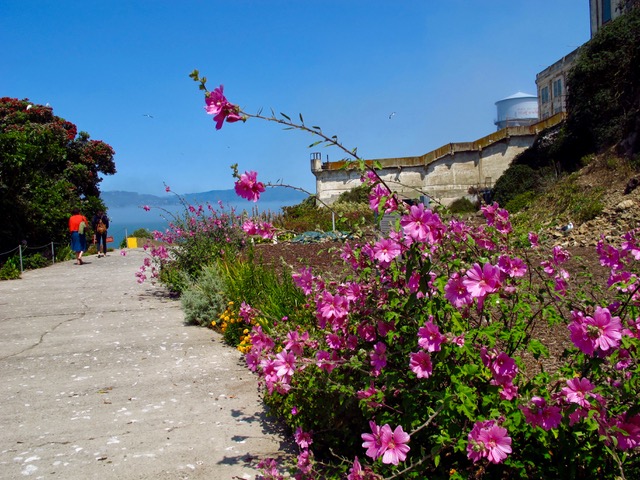
What survived untended on the Rock for more than 35 years were tough enough to stand up to drought, wind, lousy soil, and only natural precipitation. How? Smart plant choices back in the 1930s, including Mediterranean plants like succulents. After clearing out invasive plants, the recent garden restoration did its best to salvage heritage plants and returned to resilient plant choices similar to the ones that hung i
n. Don’t be put off by the California climate. Many of the plants grown would be suitable for Southern Ontario, too.
Amazingly, about 15 rose species also survived without any fussing at all – which goes to show that not all roses are prima donnas. Somehow, we missed it, but there’s still a rose garden on Alcatraz.
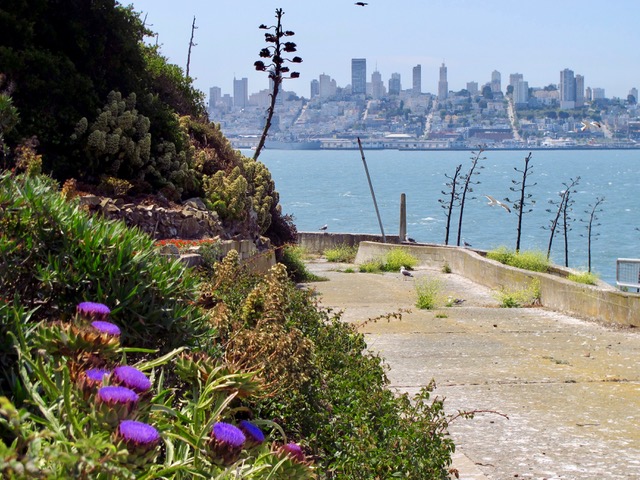
On our visit, the main show happened with the enormous cascade on the island’s west side. Imagine, this is fairly shallow soil and on a slope. The plants make do with
out fresh water, except from rain, fog and dew. California sunshine doesn’t hurt, I suppose. But “right plant, right place” really deserves much of the credit. We can do that anywhere.
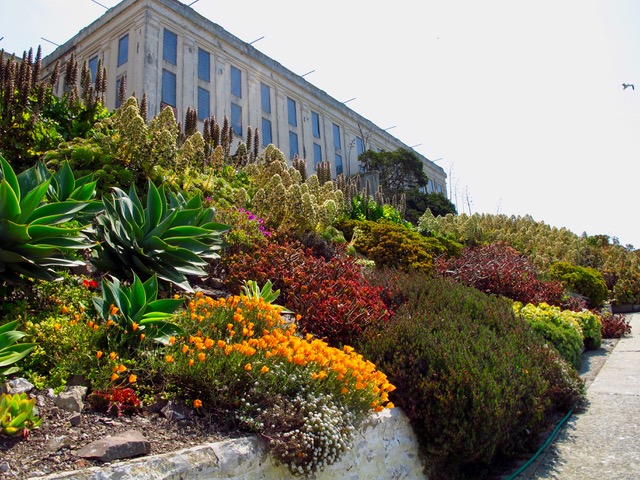
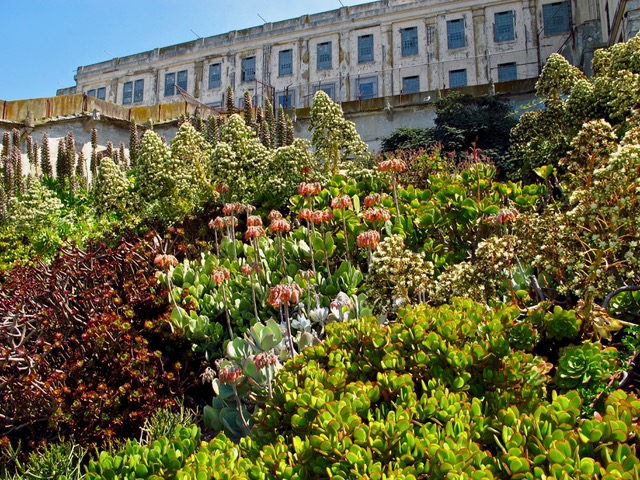
California poppies (Eschscholtzia californica) on the bottom left are an elusive object of desire for shady gardeners like Sar
ah and I, but they will grow in Ontario if given what they like: moist soil at germination, with lots of sun and dry soil at bloom time. And in the driest, shadiest corner of my dry-shade garden, the appropriately named big-root geranium (Geranium macrorrhizum) like the one on the right below is definitely a survivor here.
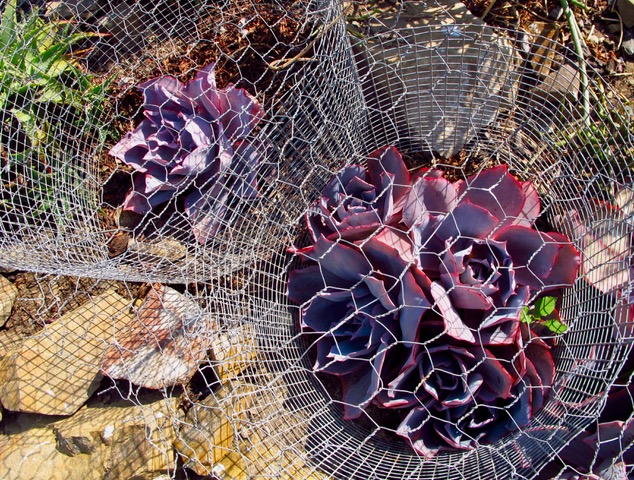
Some gardens claim a place in your memory banks. In mine, Alcatraz has persisted for nearly seven years. It’s a great story that ranges from gardening as rehabilitation to plant survival in the face of harsh conditions and decades of neglect. Plus, it has a happy ending. What more could I ask for?
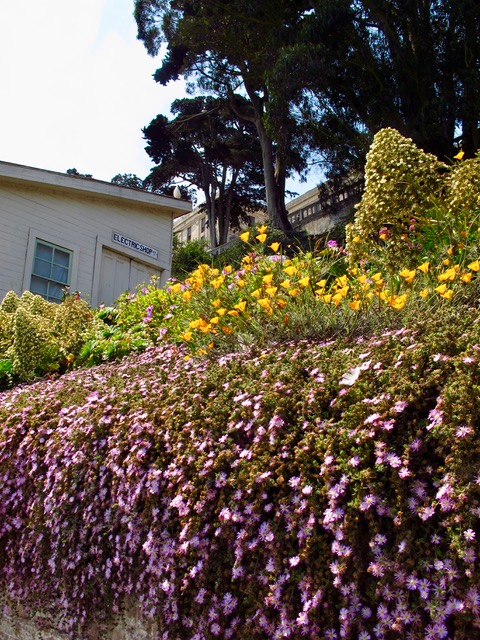
Over the next few weeks, I’m hoping to share more armchair garden tours from my past garden travels. Hope you’ll come back and join me.

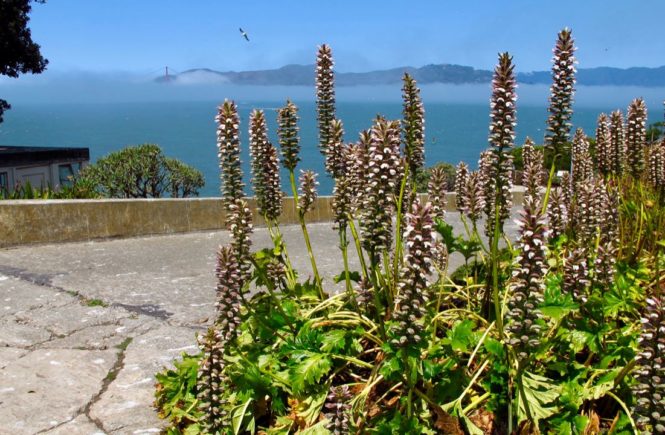
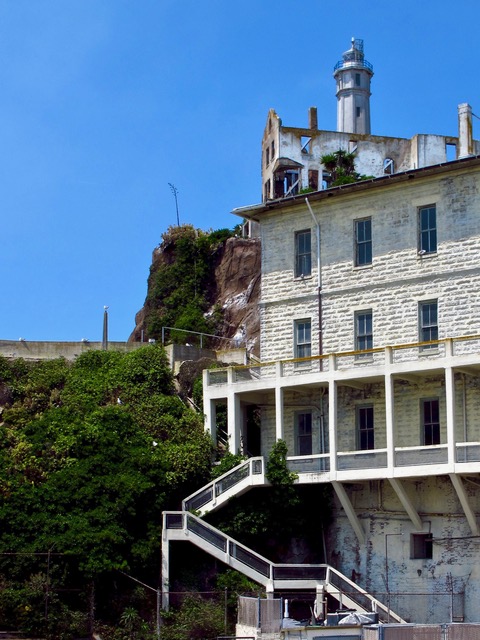
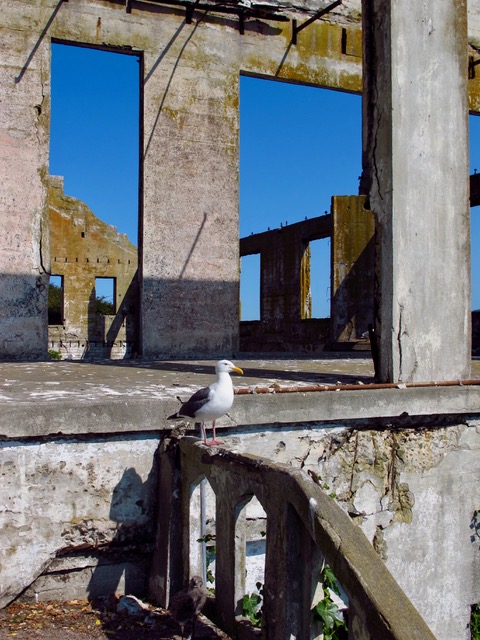
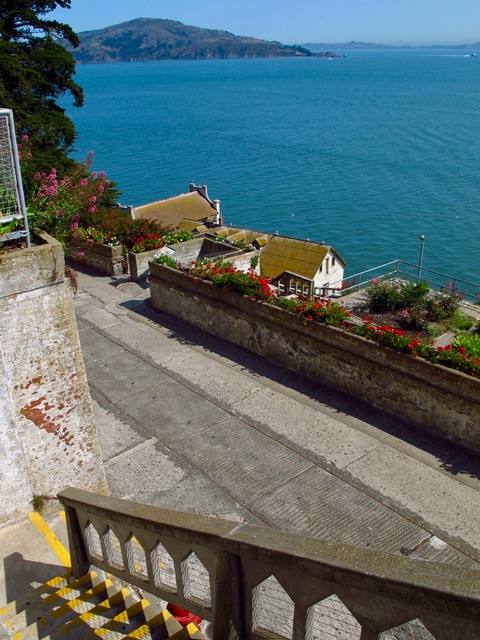
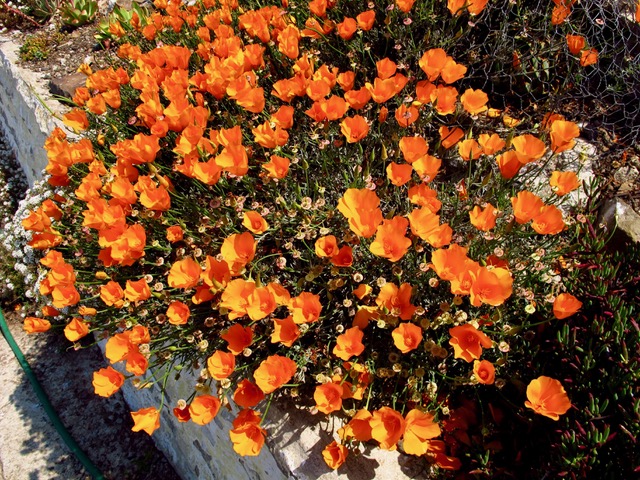
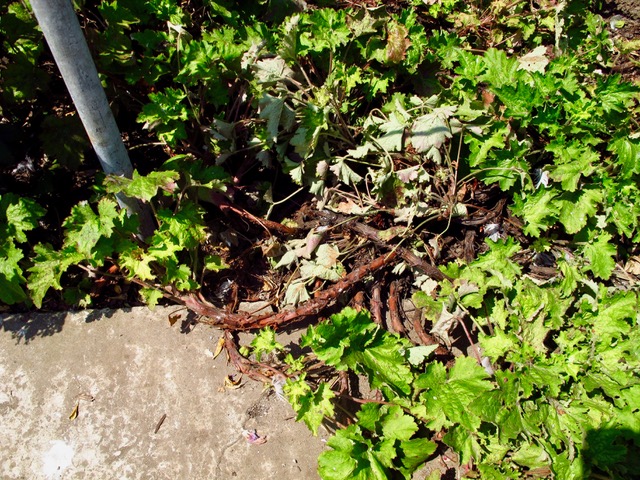


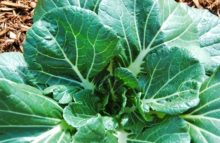
2 comments
Wow, very cool. And such a contrast to the gardens on the crookedest street!
Never even heard of the Alcatraz Gardens til now. Don’t remember any mentions of them in the movies either! Thanks for the experience!!